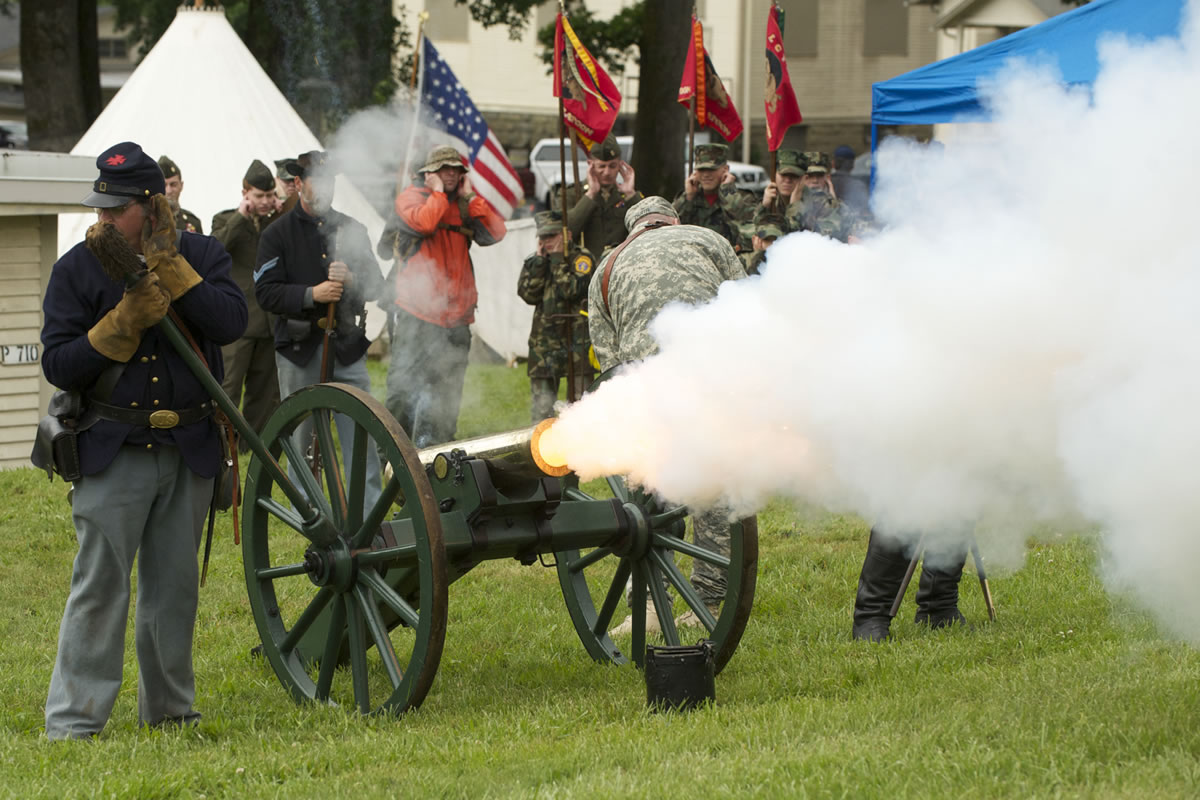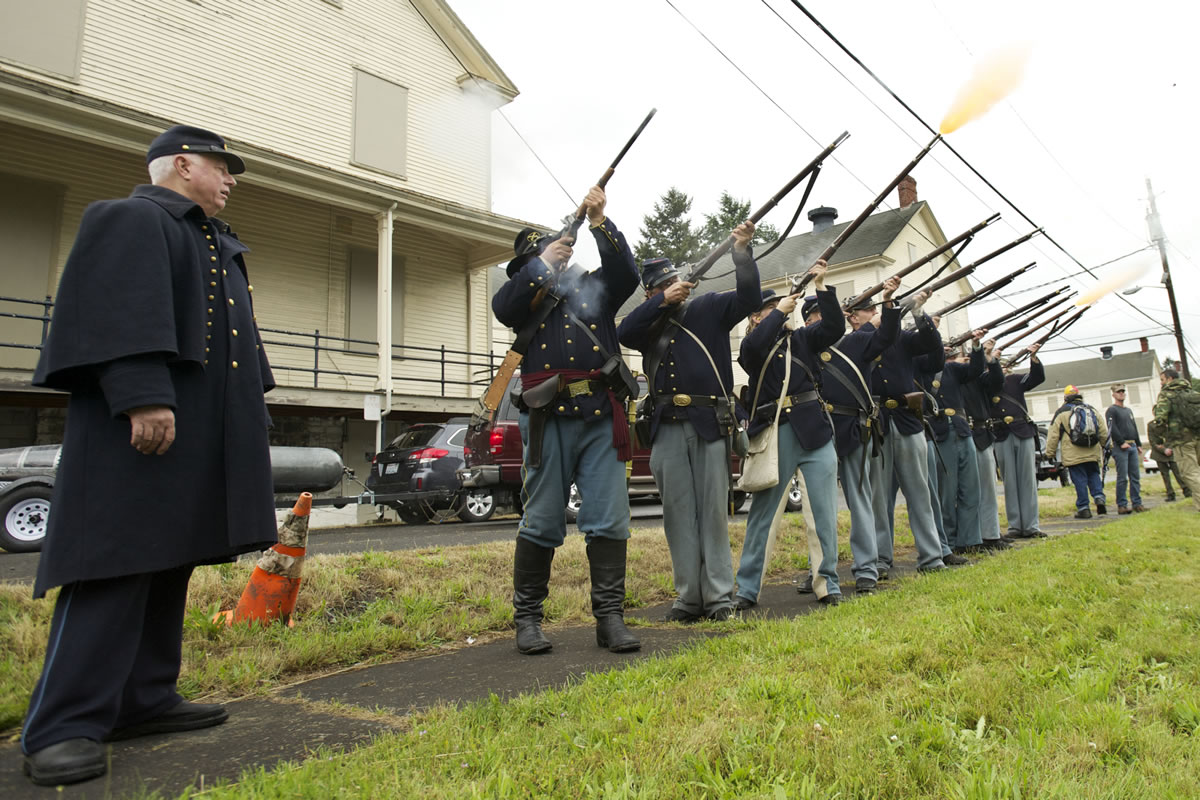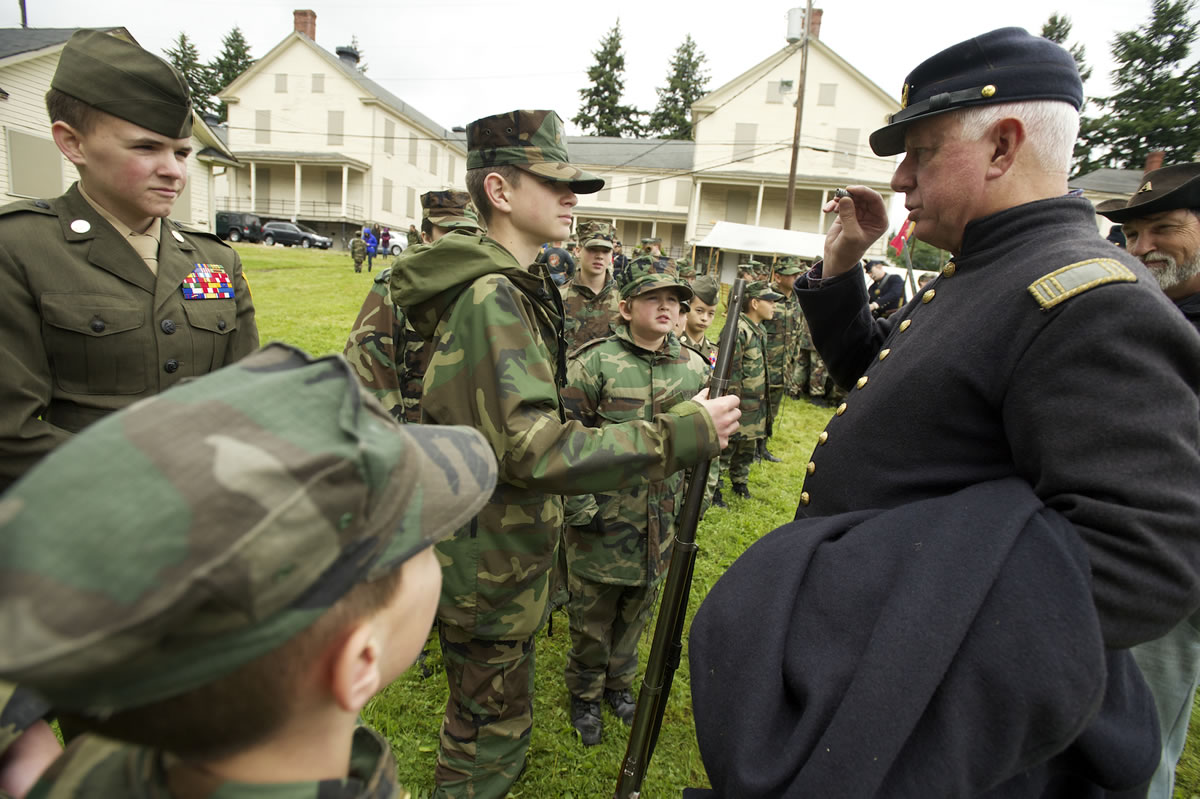1st Oregon Volunteer Infantry:
http://1stovi-20thmaine.org
The Lewis & Clark Young Marines, ages 8 to 18, plugged their ears in anticipation of the resounding cannon boom.
The firing of the 1841 mountain Howitzer cannon rattled some spectators at the soldiers’ bivouac Monday afternoon. As the white smoke cleared, re-enactor Emily Wattez with the 1st Oregon Volunteer Infantry smiled and said that shooting steel wool through the cannon is even better, as it creates spectacular sparks and fire.
The volunteer re-enactors set up an encampment just a few hundred feet away from the Memorial Day Ceremony at the Vancouver Barracks. One could hear a fife play “Johnny Comes Marching Home” as the volunteers explained the weaponry used by local troops during the Civil War. The 1st Oregon Volunteer Infantry was stationed at the barracks while federal troops headed east.
“This was home for them,” re-enactor Ben Keeley said.
While the infantry never engaged in combat, it helped protect the barracks and shipments during the gold rush.
The Civil War is a war to remember because it represented a big transition for the military, Keeley said. Weaponry and strategies were evolving. While the typical muzzle-loading musket could accurately shoot a target 500 yards away, tactics weren’t up to pace with technology. Many troops still fired at close range. Loading a musket took nine steps, or 20 seconds — precious time when there’s enemy fire. And it was heavy. The bullet alone, called a Minié ball, weighed about as much as eight quarters.
The musket, however, was overshadowed by advanced weaponry that wasn’t adopted during the Civil War. Rifles that repeated rounds, called Henry rifles, had been invented, but they weren’t issued by the Union Army. Soldiers called them the gun you could “load on Sunday and fire all week,” Keeley said. This more advanced weaponry was too expensive, about $30 apiece compared with the $15 muskets.
But the older musket still enthralled the young marines Sunday while re-enactors fired them, sending more white smoke into the air.






